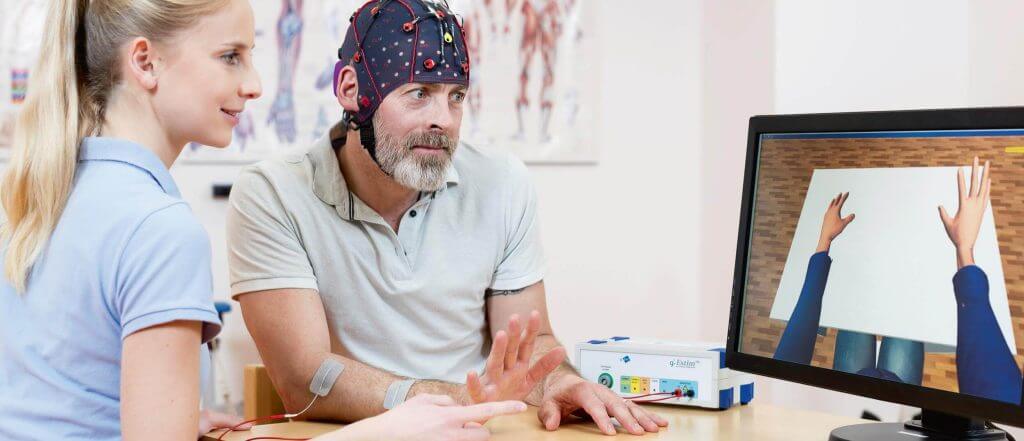RecoveriX
RecoveriX; Stroke Therapy Based on Brain-Computer Interface
Stroke has become an imminent health condition among the elderly population. The patient loses the ability to move one side of the body secondary to embolism or hemorrhage. The most destructive effects of stroke occur on the arms and hands. Most of the patients continue to suffer from functional deficiencies called sequel upon conservative therapies like physiotherapy and relatively novel therapies like robotic treatments. There have been advancements on the treatment of stroke patients and neuro-technological therapies have started to provide benefit recently.
Brain-Computer Interface; Therapy By Power of Thought
Stroke can impair the patient’s ability to move their hands or arms but it cannot stop them from thinking about it. Basically the brain activity resulting from the thought of moving a body part is identical to the brain activity resulting from actually performing the movement. Based on this fact, RecoveriX, a new neuro-technological device to improve hand movements of stroke patients.
Various therapy methods for stroke are simultaneously administered in this method. The thought of movement (stimulating the movement center of the brain), special functional electrical stimulation to introduce movement and mirror therapy conducted by monitoring virtual hand movements on the screen are concurrently administered. This method differs from the earlier therapies with the use of the patient’s brain activity as a key. Thus, the EEG waves of the patient is integrated into the system. The computer is activated by the patient’s thought of moving (BCI – Brain Computer Interface).
This EEG based therapy is composed of two stages. At the first stage, analysis step, special electrodes that can stimulate the patient’s functioning and non-functioning hand. The patient wears a special EEG head that records brain waves produced while executing the movement or attempting to do so. A special computer program analyses the brain waves read by this head. At the second stage, the treatment step, the paralyzed patient attempts to move their hand upon the command of the device. If the patient’s brain waves are consistent with the movement attempted, the relevant hand is electrically stimulated to complete the movement. During this stage, the patient can monitor the movement by the reflection of their hand (avatar) on the screen. Which provides a visual feedback to the patient. This contributes to reconfiguring the functions of the brain during recovery to enable new movements and to improve the movements patients can already execute. This therapy can be combined with another neurotechnological method, Transcranial Magnetic Stimulation (TMS – external stimulation of the brain neurons).

It is administered for 4 weeks on average. There are no side effects or contraindications of this therapy. This therapy can be administered in acute and chronic stroke cases and it can even provide positive outcomes for the patients that have been suffering for a long time.
You can see the video of RecoveriX Therapy below.

